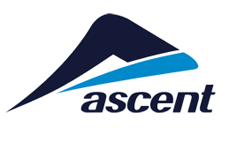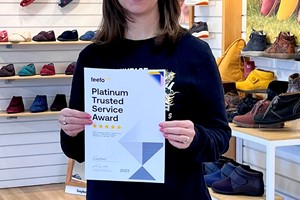The role of footwear in preventing slips, trips and falls in the workplace.

A fall in a public place or at work can be a very distressing and humiliating event. It can become a serious issue in the workplace when injuries occur as a result of slips, trips and falls. Over 20% of all accidents in the workforce are classified in the slips, trips and fall category, with over half of these being caused by environmental agencies.
Environmental factors can include slippery surfaces following rain or spills, poorly designed or maintained walkways and poor lighting. Feeling sure footed in the workplace is essential. Wearing appropriate footwear is the most effective method of ensuring a safe workplace to prevent slips, trips and falls.
So, what are the critical features of a shoe to prevent workplace injuries?
1. It must be Fit for Purpose
When selecting and purchasing footwear for work, you should make sure it is fit for purpose. Ask yourself the following questions when trying on shoes:
- What type of environment will I be working in?
Are you working inside a factory, or out in the field? How often are you on your feet? Do you need protection from the elements, or is ventilation important to prevent over heating?
- What floor conditions will I be working on?
Is it smooth and firm, or loose terrain? Is the ground dry or can it sometimes be wet?
- What materials or liquids might I come in contact with?
Do you come in contact with oils and soap? This can provide more of a slippery surface than water. Do you work with chemicals that degrade certain materials quickly?
2. It must have the appropriate level of slip resistance
The majority of slip accidents occur on wet or contaminated surfaces. Footwear alone will not eliminate slip on contaminated surfaces, making it impossible to make footwear ‘non-slip’ or resistant to slip under all conditions. Selecting footwear with an appropriate tread pattern or surpassing a slip rating, however, will help minimise the risk of slipping.
3. It must be comfortable
Our feet are the only point of contact that we have with the ground, and the forces from the ground can be felt all the way up our legs to our back. Comfortable, supportive footwear can reduce the stress in our muscles and ligaments. Not only that, but footwear with anti-fatigue properties allows you to work on your feet for much longer periods. Look for the following attributes to reduce fatigue and minimise the risk of falls.
- Good Cushioning
It is ideal to have multiple layers of cushioning under the heel and forefoot. Avoid shoes that are too soft and provide little support.
- Stable Platform
A firm heel counter and stable midfoot allows the shoe to work with the foot during the gait cycle. Good torsional stability protects the foot from excessive pronation.
- Flexibility
The shoe needs to flex in the correct place at take-off. All too often footwear does not meet this need and can be the cause of Plantar Fasciitis.
4. It must be the correct fit
Having shoes that meet all of the above requirements will not make a difference if the shoe does not fit correctly. A shoe that fits too large can be a cause of tripping, and too small will cause damage to your feet. Take the following things into consideration when trying on shoes:
- Foot Length (heel to toe measurement)
- Arch Length (heel to ball of foot measurement)
- Width
- Foot Shape
It is always best to have your foot measured by a professional using an appropriate measuring device.
The Ascent range of Work shoes have an impressive array of stability and cushioning features. Ascent is a proven, innovative Australian born and bred footwear brand that started with a sporting shoe heritage. Ascent have put this high level of cushioning and support into their work shoes to provide Comfort for Hard Working Feet!
It’s what’s on the inside that counts!

Blog home >
Recent Posts
-
Friendly Shoes join the HFG-a warm welcome to you.
Introducing Friendly Shoes, the UK’s first fully adaptive footwear brand
Designed by an occupational therapist, …
read more
-
Cosyfeet achieves platinum in US and UK
Cosyfeet Achieves Platinum in US and UK
Cosyfeet, the Somerset-based retailer of premium footwear for people with …
read more
-
Cosyfeet wins Platinum with Feefo
Cosyfeet Wins Platinum with Feefo
Cosyfeet is the proud recipient of a Feefo Platinum Trusted Service award for 2022 …
read more




